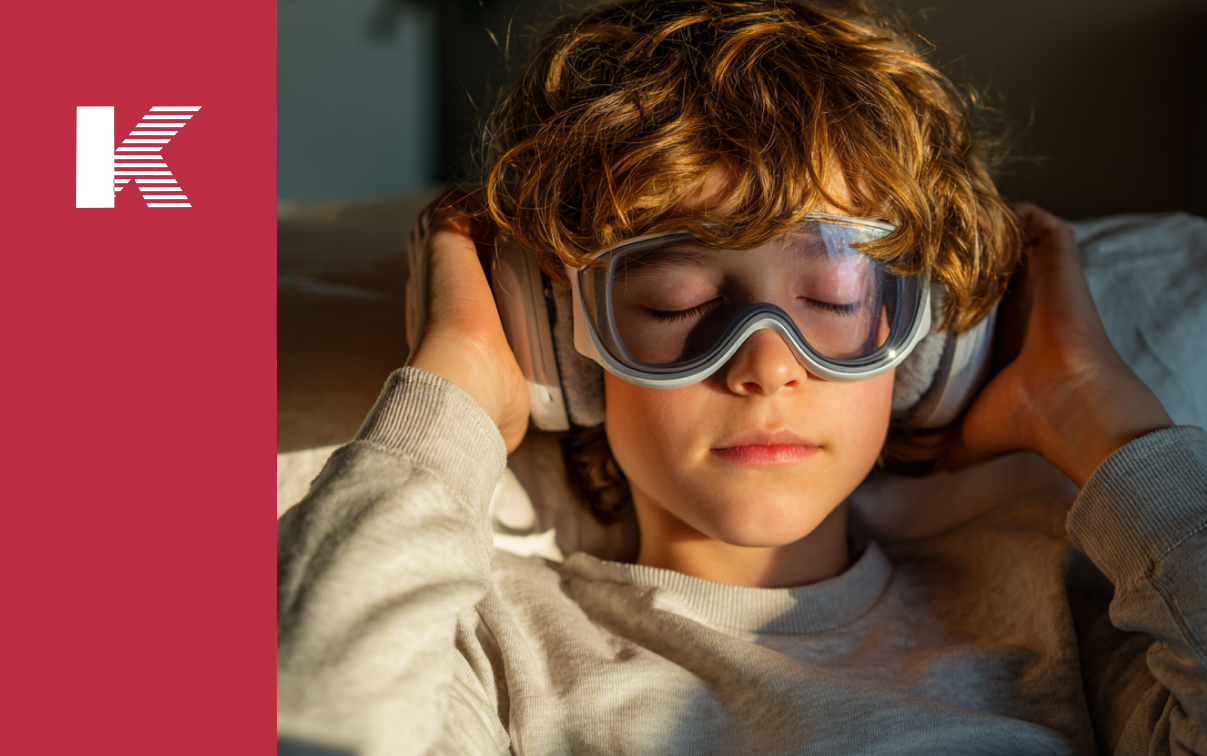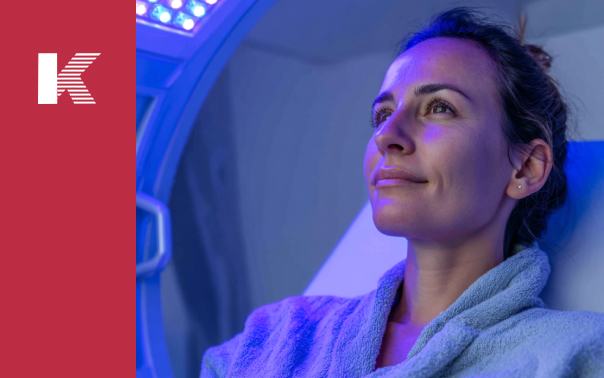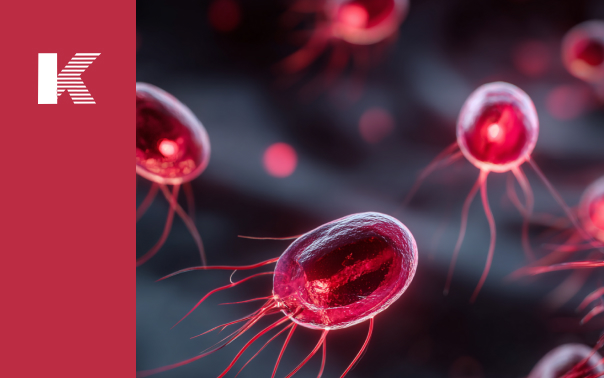
Red
Nerve System
Attention Deficit Hyperactivity Disorder (ADHD) affects millions of children and adults worldwide, significantly impacting their daily functioning and quality of life. As our understanding of this neurodevelopmental disorder deepens, researchers and clinicians are exploring innovative therapeutic approaches beyond traditional pharmaceutical interventions. Among these emerging treatments, light therapy has shown remarkable promise as a non-invasive, side-effect-free approach to managing ADHD symptoms.
The Challenge of ADHD and Limitations of Traditional Treatment
ADHD is characterized by persistent patterns of inattention, hyperactivity, and impulsivity that interfere with functioning and development. These core symptoms are often accompanied by executive function deficits, emotional dysregulation, and sleep disturbances. While traditional stimulant medications have proven effective for many patients, they may cause significant side effects including appetite suppression, sleep disturbances, mood swings, and growth concerns in children.
Perhaps most importantly, research has revealed that individuals with ADHD frequently experience circadian rhythm disruptions. Studies show that delayed sleep timing (circadian phase delay) predicts ADHD symptom severity, with patients often exhibiting delayed sleep-wake cycles, difficulty falling asleep, morning awakening challenges, and abnormal patterns of daytime alertness. This circadian misalignment not only exacerbates core ADHD symptoms but also impacts cognitive function and emotional stability.
The Science Behind Light Therapy
Light therapy, particularly Bright Light Therapy (BLT), works by regulating the body's biological clock through controlled exposure to specific wavelengths and intensities of light. When light of appropriate parameters reaches the retina, it suppresses melatonin production by the pineal gland while promoting serotonin synthesis, effectively resynchronizing the circadian rhythm system.
Recent advances in transcranial photobiomodulation (t-PBM) have introduced another dimension to light therapy applications. Near-infrared light therapy activates cytochrome c oxidase in the mitochondrial respiratory chain, thereby enhancing ATP synthesis and providing direct neurobiological benefits including:
- Enhanced Cellular Energy Metabolism: Increased mitochondrial ATP production, boosting neuronal activity
- Reduced Neuroinflammation: Studies found that t-PBM reduced neuroinflammation, increased cerebral blood flow, reduced oxidative stress, and stimulated neuroplasticity and synaptogenesis
- Promoted Neuroplasticity: Stimulation of nerve growth factor production, enhancing brain adaptability
- Optimized Neurotransmitter Balance: Improved function of key neurotransmitters including dopamine and serotonin
Clinical Research Evidence for ADHD Light Therapy
Multiple clinical studies provide compelling evidence for the efficacy of light therapy in ADHD management:
Adult ADHD Studies
A groundbreaking open trial published in the Journal of Clinical Psychiatry demonstrated significant improvements in ADHD symptoms following three weeks of morning bright light treatment (10,000 lux, 30 minutes) in adults with ADHD. The strongest correlate of improvement in core ADHD pathology was a phase advance in circadian preference rather than alleviation of comorbid seasonal affective disorder, indicating that light therapy's benefits for ADHD are primarily mediated through circadian rhythm regulation mechanisms.
Circadian Phase Correction Research
A pivotal pilot study published in the Journal of Psychiatric Research specifically examined the relationship between circadian phase correction and ADHD symptom improvement. Participants with ADHD underwent 2-weeks of 30-min morning 10,000-lux BLT beginning 3 hours after mid-sleep time, with results showing that correcting delayed circadian phase directly predicted symptom improvement.
Adolescent and Young Adult Research
A large-scale randomized controlled trial is currently comparing bright light therapy with physical exercise in preventing comorbid depression and obesity in ADHD patients. This represents the first RCT to establish feasibility and efficacy of these interventions targeting the prevention of co-morbid conditions in ADHD.
Transcranial Photobiomodulation Evidence
Recent case studies published in the Journal of BLyehavioral and Brain Science have explored the efficacy of transcranial photobiomodulation for ADHD. The treatment, known as transcranial photobiomodulation (tPBM) delivers near-infrared to infrared light to the brain tissue through the scalp and skull, showing promise for improving attention and working memory.
Neuroimaging and Cognitive Function
Neuroimaging studies suggest that light therapy may improve cognitive function in ADHD patients through several mechanisms:
- Enhanced Prefrontal Cortex Activity: Improved executive function and working memory capacity
- Optimized Default Mode Network: Reduced attentional wandering and improved focus
- Improved Cortico-Subcortical Circuits: Enhanced cognitive control and impulse inhibition
Light Therapy Application Strategies for ADHD
Treatment Protocol Design
Based on current research evidence, optimal ADHD light therapy protocols include:
Bright Light Therapy Protocol:
- Light Intensity: 10,000 lux
- Treatment Duration: 30-60 minutes
- Treatment Timing: Within 30 minutes of morning awakening
- Treatment Period: Continuous 3-6 weeks
- Maintenance: Frequency adjusted based on symptom improvement
LED/t-PBM Light Therapy Protocol:
- Wavelength Selection: Red light (660nm) and near-infrared light (810-850nm)
- Power Density: 10-100 mW/cm²
- Treatment Sites: Specific head regions (prefrontal, temporal areas)
- Treatment Frequency: 3-5 sessions per week, 20-30 minutes each
Personalized Treatment Considerations
Light therapy protocols should be individualized based on patient-specific factors:
- Age Factors: Pediatric patients may require shorter treatment durations and lower light intensities
- Comorbid Conditions: Patients with comorbid depression may benefit from extended light therapy
- Chronotype Characteristics: Light timing adjusted based on individual circadian preferences
- Seasonal Variations: Winter months may require increased treatment intensity and frequency
Safety Profile and Tolerability of Light Therapy
Compared to traditional pharmaceutical treatments, light therapy offers significant safety advantages:
Minimal Side Effects
- Eye Discomfort: Mild eye fatigue or dryness, typically resolving after adaptation period
- Headache: Some patients may experience mild headaches during initial treatment phase
- Sleep Pattern Changes: Brief sleep adjustment period may occur during treatment initiation
Important Contraindications
- Ophthalmologic Conditions: Patients with severe retinal diseases require careful evaluation
- Photosensitizing Medications: Patients taking photosensitive drugs need medical supervision
- Bipolar Disorder: Potential to trigger manic episodes requires close monitoring
Technological Advances in Light Therapy Devices
Modern light therapy devices continue to evolve, providing better treatment options for ADHD:
Portability and User-Friendly Design
- Wearable Devices: Head-mounted LED systems enable convenient treatment delivery
- Smart Control Systems: Smartphone app integration for precise parameter adjustment
- Automated Programs: Circadian rhythm-based automatic intensity and timing adjustments
Technical Innovations
- Multi-Spectral Integration: Combined visible and near-infrared light therapeutic approaches
- Pulsed Light Technology: Optimized light delivery patterns to enhance treatment efficacy
- Biofeedback Systems: Real-time treatment response monitoring with parameter optimization
Comprehensive Treatment Strategies
Light therapy demonstrates optimal effectiveness when integrated into comprehensive ADHD treatment approaches:
Integration with Behavioral Interventions
- Cognitive Behavioral Therapy: Light therapy improves circadian rhythms while CBT establishes positive behavioral patterns
- Mindfulness Training: Enhanced attention regulation capabilities
- Executive Function Training: Targeted improvement of working memory and cognitive flexibility
Lifestyle Intervention Integration
- Sleep Hygiene Education: Establishing regular sleep-wake cycles
- Exercise Programs: Synergistic effects of aerobic exercise with light therapy
- Nutritional Guidance: Support for neurotransmitter synthesis and circadian regulation
Pharmaceutical Treatment Complementarity
Light therapy can serve as an effective complement to medication therapy, potentially reducing pharmaceutical dependence:
- Reduced Medication Dosage: Patients showing significant light therapy response may require lower stimulant doses
- Improved Drug Tolerability: Light therapy may mitigate certain medication side effects
- Enhanced Treatment Efficacy: Combined approaches may produce synergistic therapeutic effects
Future Research Directions and Perspectives
The field of ADHD light therapy continues to evolve with several promising research areas:
Mechanistic Research
- Neural Network Analysis: Advanced understanding of light therapy's impact on brain network connectivity
- Genetic Polymorphism Studies: Research into individual genetic differences affecting light therapy response
- Biomarker Development: Identification of objective predictors of light therapy efficacy
Technical Optimization
- Spectral Precision: Determination of optimal light spectrum configurations for different ADHD subtypes
- Dose-Response Relationships: Establishment of precise treatment parameter guidelines
- Long-term Effects: Assessment of light therapy durability and long-term safety
Clinical Application Expansion
- Early Intervention: Exploring light therapy's role in early ADHD prevention
- Comorbidity Treatment: Research into light therapy's comprehensive effects on ADHD-associated conditions
- Special Populations: Safety studies in elderly ADHD patients and pregnant individuals
Evidence-Based Treatment Guidelines
Healthcare providers considering light therapy for ADHD patients should follow evidence-based guidelines:
Patient Selection Criteria
- Circadian Rhythm Assessment: Evaluate sleep-wake patterns and chronotype
- Symptom Severity Evaluation: Assess core ADHD symptoms and functional impairment
- Comorbidity Screening: Identify concurrent mental health conditions
- Treatment History Review: Consider previous medication responses and side effects
Monitoring and Assessment
- Objective Sleep Measures: Actigraphy monitoring during treatment
- Standardized Rating Scales: Regular ADHD symptom assessment using validated instruments
- Functional Outcome Measures: Evaluation of daily functioning and quality of life improvements
- Safety Monitoring: Regular assessment for adverse effects and treatment tolerance
Clinical Implementation Considerations
Successful implementation of light therapy for ADHD requires careful attention to practical considerations:
Healthcare Provider Training
- Light Therapy Principles: Understanding photobiological mechanisms and circadian science
- Device Operation: Proper use and maintenance of light therapy equipment
- Patient Education: Effective communication of treatment rationale and procedures
- Monitoring Protocols: Systematic approaches to treatment response assessment
Treatment Setting Optimization
- Clinical Environment: Appropriate lighting conditions during treatment sessions
- Home-Based Treatment: Guidelines for safe and effective home light therapy use
- Compliance Strategies: Approaches to maximize treatment adherence
- Documentation Systems: Comprehensive record-keeping for treatment monitoring
The Role of Quality Medical Devices
The efficacy and safety of light therapy for ADHD depend significantly on the quality of medical devices used. Professional-grade light therapy equipment should meet stringent regulatory standards:
Regulatory Compliance
- FDA Clearance: Devices should have appropriate medical device clearances
- International Standards: Compliance with ISO 13485 quality management systems for medical device manufacturing
- Safety Certifications: Adherence to electrical safety and electromagnetic compatibility standards
Technical Specifications
- Light Output Accuracy: Precise control and measurement of light intensity and spectral composition
- Treatment Consistency: Reliable performance across multiple treatment sessions
- User Safety Features: Built-in safety mechanisms to prevent overexposure and adverse effects
Cost-Effectiveness and Healthcare Economics
Light therapy presents an attractive economic proposition for healthcare systems:
Direct Cost Comparisons
- Reduced Medication Costs: Potential for decreased pharmaceutical expenditures
- Lower Healthcare Utilization: Reduced need for frequent medical visits and interventions
- Improved Productivity: Enhanced work and academic performance leading to economic benefits
Long-term Economic Benefits
- Reduced Comorbidity Costs: Prevention of depression and anxiety-related healthcare expenses
- Educational Outcomes: Improved academic performance and reduced special education needs
- Occupational Benefits: Enhanced workplace productivity and reduced disability-related costs
Global Research Collaboration and Future Directions
The advancement of ADHD light therapy requires international research collaboration:
Multicenter Clinical Trials
- Standardized Protocols: Development of unified treatment protocols across research centers
- Diverse Population Studies: Investigation of light therapy efficacy across different ethnic and cultural groups
- Long-term Follow-up: Extended studies to assess sustained treatment benefits
Technology Development Partnerships
- Industry-Academia Collaboration: Joint development of next-generation light therapy devices
- Open Science Initiatives: Sharing of research data and protocols to accelerate discovery
- Regulatory Harmonization: International coordination of device approval processes
Conclusion
Light therapy represents a paradigm shift in ADHD treatment, offering a scientifically-grounded, non-invasive alternative to traditional pharmaceutical approaches. Through regulation of circadian rhythms, enhancement of neural function, and improvement of cognitive capabilities, light therapy addresses multiple aspects of ADHD pathophysiology while providing patients with a safe, well-tolerated treatment option.
The growing body of clinical evidence, including studies published in prestigious journals like the Journal of Clinical Psychiatry and Journal of Psychiatric Research, demonstrates that light therapy can produce meaningful improvements in ADHD symptoms. As our understanding of the underlying mechanisms continues to evolve, and as technology advances enable more sophisticated treatment delivery systems, light therapy is poised to become an increasingly important component of comprehensive ADHD care.
For patients, families, and healthcare providers, light therapy offers hope for a brighter future – one where the burden of ADHD can be effectively managed through the healing power of light. With continued research, technological innovation, and clinical implementation, light therapy has the potential to transform the lives of millions affected by this challenging but manageable condition.
The commitment of companies like Kaiyan Medical to developing high-quality, FDA-approved light therapy devices ensures that this innovative treatment approach will continue to be accessible, reliable, and effective for those who need it most. Through rigorous research, clinical validation, and technological excellence, the future of ADHD treatment is indeed illuminated by the promise of therapeutic light.
References and Further Reading
- Rybak, Y. E., et al. (2006). An open trial of light therapy in adult attention-deficit/hyperactivity disorder. Journal of Clinical Psychiatry, 67(10), 1527-1535.
- Fargason, R. E., et al. (2017). Correcting delayed circadian phase with bright light therapy predicts improvement in ADHD symptoms: A pilot study. Journal of Psychiatric Research, 91, 105-110.
- Bothof, H., et al. (2018). Bright light therapy versus physical exercise to prevent co-morbid depression and obesity in adolescents and young adults with ADHD: study protocol for a randomized controlled trial. Trials, 19(1), 140.
- Zhang, P., et al. (2024). Transcranial photobiomodulation for neurodevelopmental disorders: a narrative review. European Child & Adolescent Psychiatry.
- Saucedo, C. L., et al. (2024). Devices used for photobiomodulation of the brain—a comprehensive and systematic review. Journal of NeuroEngineering and Rehabilitation, 21, 50.
- Salehpour, F., et al. (2024). Photobiomodulation Therapy on Brain: Pioneering an Innovative Approach to Revolutionize Cognitive Dynamics. Cells, 13(11), 966.
This article is written for medical professionals and is based on current scientific research. All treatment decisions should be made under the guidance of qualified healthcare providers. For the latest research updates and clinical protocols, consult peer-reviewed medical literature and professional medical organizations.
Newsletter
Get started with Kaiyan Newsletter
Receive the latest news, articles, updates and events from us.
Oops! Something went wrong while submitting the form.


.png)